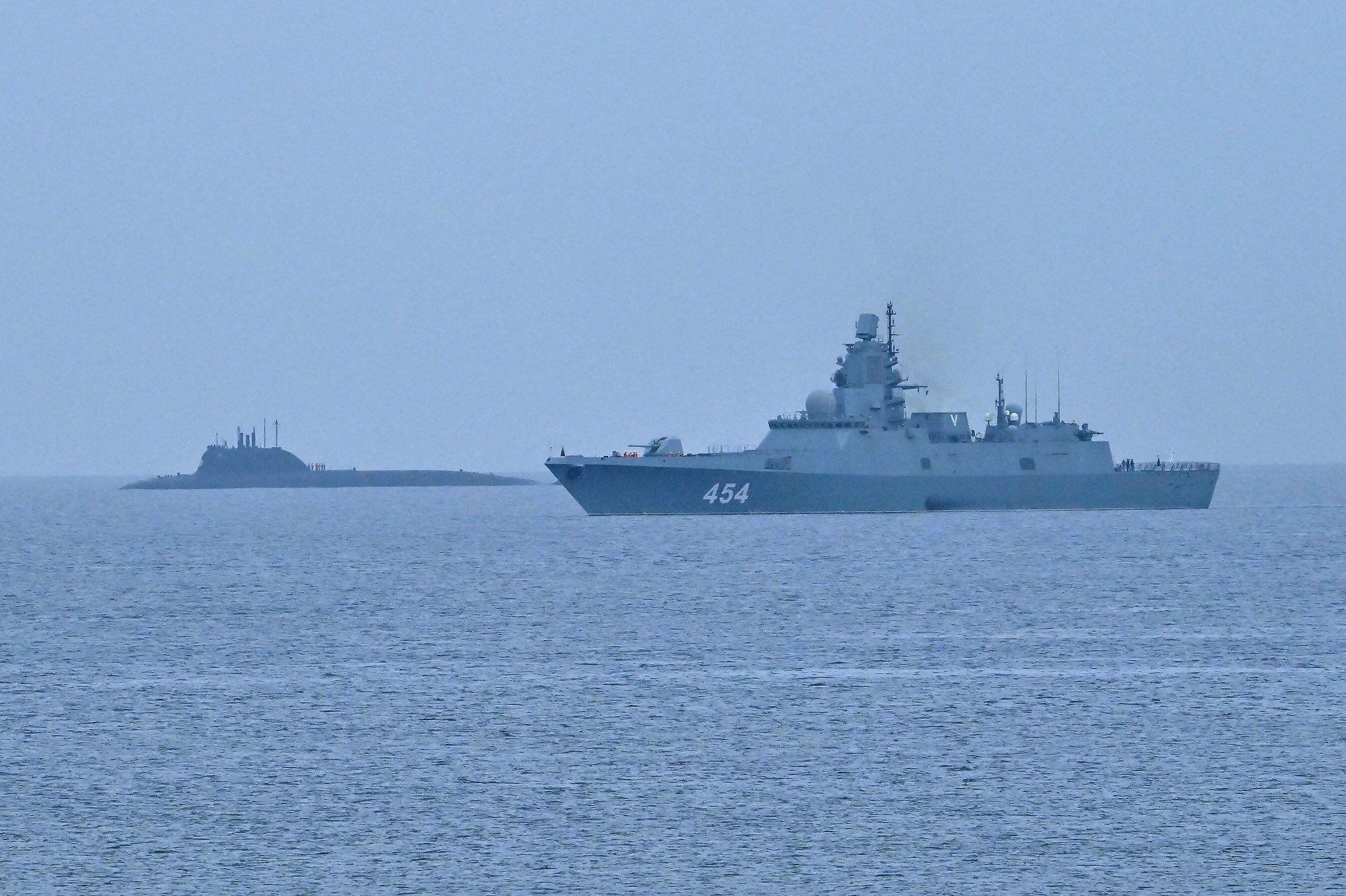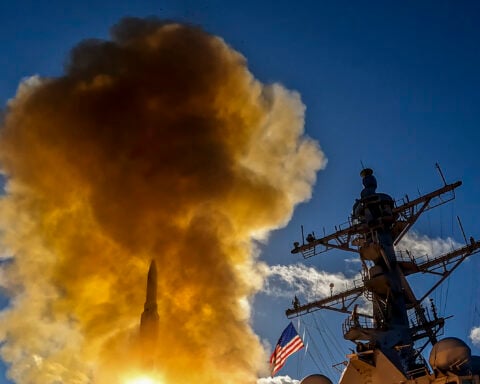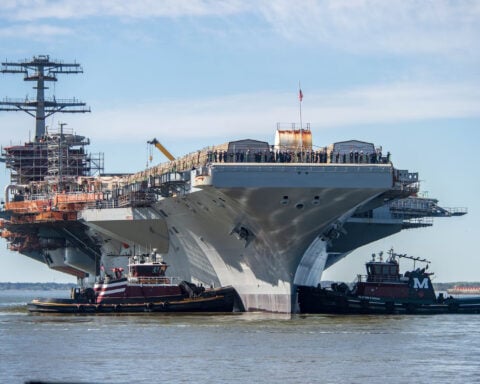
The four-ship Russian Navy action group arrived in Havana on Wednesday for a five-day port visit, local media reported.
Guided-missile submarine Kazan, guided-missile frigate Admiral Gorshkov, salvage tug Nikolai Chiker and fleet oiler Âkademik Pashin pulled in on Wednesday as part of the Russian Ministry of Defense’s planned series of exercises in the western Atlantic and the Caribbean.
Gorshkov and Kazan are among the most advanced ships in the Russian Navy and can be armed with a variety of anti-ship and land attack missiles, USNI News reported earlier this week.
Following the port visit, the ships plan to hold joint air and naval drills in the region, Russian military officials have said.
“During the exercise, the crews of the frigate and the nuclear-powered submarine have been practicing the use of high-precision missile weapons by means of computer modelling against sea targets, which indicate ship groups of the conditional enemy and are located at a distance of more than 600 kilometers,” said head of the Russian Navy, Adm. Alexander Moiseyev, according to Euro News.
Pentagon officials confirmed an uptick in Atlantic operations when reached by USNI News on Wednesday.
“In accordance with standard procedure, we’ve been actively monitoring the Russian ships as they transit the Atlantic Ocean within international waters. Russia’s deployments are part of routine naval activity which pose no direct threat or concern to the United States,” reads the statement from the Office of the Secretary of Defense.
“Air and maritime assets under U.S. Northern Command have conducted operations to ensure the defense of the United States and Canada.”
In response to the group operating near Florida, on Tuesday the U.S. dispatched three guided-missile destroyers that were joined by a French Navy frigate and a Canadian warship. Canadian and U.S. anti-submarine aircraft also monitored the transit of the Russian ships, according to publicly available aviation data.
U.S. officials said they would increase regional naval presence.
“The United States is answering the call by increasing its naval presence across the theater and increasing its participation in exercises and operations with allies and partners – to encourage responsible behavior by all. The Navy’s U.S. 2nd Fleet, U.S. 4th Fleet, U.S. Coast Guard Atlantic Area and Canadian Joint Task Force – Atlantic are conducting routine operations throughout the Atlantic, and we will continue to operate and engage from a position of strength,” reads the statement.
While Russia is no stranger to operating in the region, sending some its most advanced ships to sail near the U.S. carries a message from the Kremlin, some analysts have said.
Benjamin Gedan, director of the Latin America Program at the Wilson Center, made a direct connection between the Russian Navy drills and U.S. support for Ukraine
“The warships are a reminder to Washington that it is unpleasant when an adversary meddles in your near abroad,” Gedan told The Associated Press.
“It also reminds Russia’s friends in the region, including U.S. antagonists Cuba and Venezuela, that Moscow is on their side.”
On Wednesday, Canada announced it’s also sending a warship to Havana on an overlapping schedule with the Russian port call.
“His Majesty’s Canadian Ship (HMCS) Margaret Brooke will conduct a port visit to Havana from June 14 to 17, 2024, in recognition of the long-standing bilateral relationship between Canada and Cuba,” reads a social media post on X from the Canadian Joint Operations Command.





